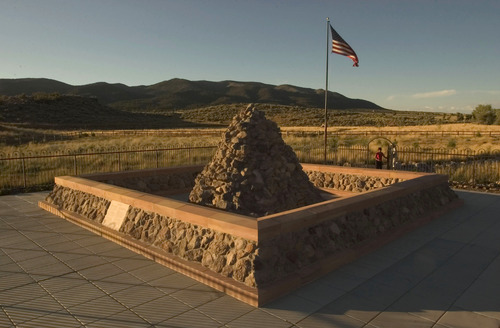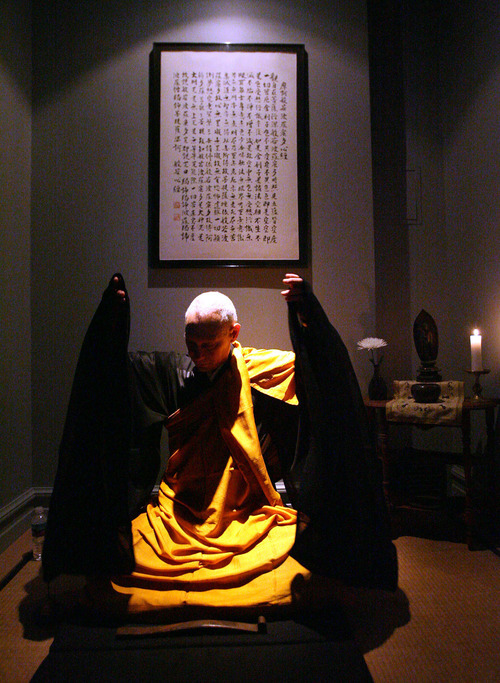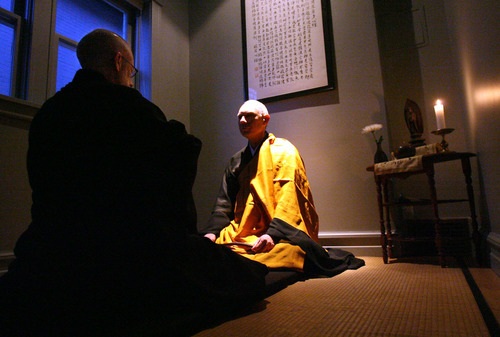This is an archived article that was published on sltrib.com in 2012, and information in the article may be outdated. It is provided only for personal research purposes and may not be reprinted.
1. 'Mormon moment' arrives
First, Mitt Romney starts running for president again. (Did he ever stop?) Then another Mormon, Jon Huntsman, joins him in the 2012 race. With two LDS Republicans in the White House hunt, it becomes open season on all things Mormon. News outlets from coast to coast pump out stories about the Utah-based Church of Jesus Christ of Latter-day Saints — its doctrines, its disciples, its quirks, its cultures. Along the way a Dallas pastor revives an old slap — alleging that Mormons are non-Christian cult members — and Huntsman sparks a new discussion — saying his membership is "hard to define" — about the varying degrees of Mormon-ness. A national Salt Lake Tribune poll shows at least a quarter of U.S. voters are uncomfortable to some degree with the prospect of a Mormon president. Their main hesitation: the LDS faith's past ties to polygamy. If Romney, the consensus GOP front-runner, wins the Republican nomination, the "Mormon moment" could grow exponentially in 2012.
2. Utah Compact spreads
Although signed by a cross section of Utah civic and religious leaders in November 2010, the immigration-reform-minded Utah Compact stretches its influence into four other states in 2011 and is touted to federal officials in Washington, D.C., as well. Maine and Indiana use a template of the compact to head off enforcement-only immigration laws in their legislatures. Iowa unveils its compact just ahead of the Republican caucuses. Utah's family-friendly compact, endorsed by the state's predominant LDS Church, shakes the political landscape of its southern neighbor, too, playing a role in the recall of Arizona's anti-immigrant firebrand Russell Pearce, whom Mesa voters dump in favor of fellow Mormon Jerry Lewis, a compact backer. The compact is designed to reduce angry rhetoric and emphasize empathy and economic contributions made by undocumented workers. Utah's Catholic bishop, John C. Wester, also leads the fight against enforcement-only immigration crackdowns, reminding Utahns that "all people deserve to be treated with dignity and respect regardless of immigration status."
3. Mormon singles wards change
LDS leaders get a jump on "ward hopping" by eliminating Utah's student congregations and replacing them with so-called Young Single Adult wards. From now on, unmarried Latter-day Saints between ages 18 and 30 have two options: Remain in their home (family) wards or attend an assigned YSA ward. The change affects tens of thousands of Utah Mormons and immediately boosts church attendance among a population whose inactivity had concerned LDS leaders. The goal of these wards is provide chances for young singles to worship, participate in social activities and, according to the LDS Handbook, "find marriage partners and prepare to marry."The move comes just days after LDS President Thomas S. Monson urges young single Mormon men to stop hanging out together and start dating young LDS women with an eye toward a temple wedding. "There is a point," Monson says, "at which it's time to think seriously about marriage and to seek a companion with whom you want to spend eternity."
4. A new Mass is unveiled
For the first time in nearly 40 0 years, Catholics in Utah and across the English-speaking world begin, in late November, using a new translation of the church's ritual text of prayers, responses and songs during Mass. Nearly a decade in the making, the new wording reflects the original Latin more closely. Most of Utah's almost 300,000 Catholics find the differences small but significant. Reactions are mostly positive, the diocesan newspaper reports, with just a few stumbles. One of the biggest changes has to do with congregational responses to the prompt "The Lord be with you." In the past, worshippers say, "And also with you." Now, they answer, "And with your spirit."
5. Warren Jeffs is sentenced
Texas jurors convict polygamous sect leader Warren Jeffs of sexually assaulting two underage "wives." They deliberate for less than 30 minutes before handing him the maximum possible sentence of life plus 20 years. The 56-year-old president of the Fundamentalist Church of Jesus Christ of Latter-Day Saints will be 100 years old before he is eligible for parole. Late in the year, reports surface that Jeffs is cracking down on his followers from behind bars, sending out apocalyptic "revelations from God" and issuing strict edicts. Some of the rules purportedly bar men from having sex with their wives and require families to discard their children's toys.
6. Greek Orthodox community bickers
Greek Orthodox believers in Utah are at odds over whether to split the parish into two. Currently, Holy Trinity and Prophet Elias Greek Orthodox churches form a single parish, but Metropolitan Isaiah, the church's regional leader in Denver who oversees Utah and several Western states, pushes them to divide. It turns into a fractious debate, including lawsuits, mutual allegations of misdoing and a December meeting that requires a police presence. Grievances are aired, but the issue remains unresolved.
7. Mountain Meadows Massacre site is designated
Interior Secretary Ken Salazar, at the urging of descendant groups and the LDS Church, designates the Mountain Meadows Massacre site in southwestern Utah as a national historic landmark. The new status will bring additional light to one of the darkest chapters in Mormon history. "Our hope has been that we can have this property be a fitting memorial to those whose lives were tragically and wrongly taken in September 1857," says Richard Turley, assistant LDS Church historian, in reaction to the news. "We want to have the land preserved so that it retains the sense of historicity it has had." On Sept. 11, 1857, 120 men, women and children in the Fancher-Baker wagon train were murdered at Mountain Meadows by a group of Mormon settlers.
8. Utah's go-to priest retires
After four decades as the Salt Lake City Catholic Diocese's straight-talking, problem-solving, people-loving priest, Monsignor J. Terrence Fitzgerald retires in June. During his tenure, he worked as an administrator of Notre Dame Regional High in Price, a pastor at St. Patrick in west Salt Lake City, St. Marguerite in Tooele and St. Mary of the Assumption in Park City, and, for nearly two decades, as vicar general to 300,000 Utah Catholics. The unassuming priest jokes that all it takes to become a monsignor is "never to have been in jail."
9. Utah zen master admits affair
Utah's prominent Buddhist teacher, Dennis Merzel, known as Genpo Roshi, resigns from Salt Lake City's Kanzeon Zen Center in February after acknowledging affairs with three women, including one of his advanced students. He steps aside as a Zen priest and resigns as an elder in the White Plum Asanga, a consortium of Zen centers. His actions divide students at the Kanzeon center and trigger a public rebuke by dozens of Zen teachers across the country. By summer, Merzel is again using the title "Zen master" and continues to give workshops and lectures based on his Big Mind program.
10. 'Book of Mormon' musical takes off
And it came to pass that an unlikely satirical hit from the brains behind "South Park" did attract great multitudes on Broadway and did dominate the Tonys, winning the biggest prize, best musical, and eight other awards, to become one of the most honored productions in history. Yes, the show is bawdy. Yes, it is irreverent. And, yes, it is ... surprisingly sweet. "You guys made this show what it is," co-creator Trey Parker tells a cheering Tony audience. "And therefore, you're going to have to atone for it one day." And one day, theater insiders say, the show will play to sold-out crowds in the heart of Mormondom: downtown Salt Lake City.



















